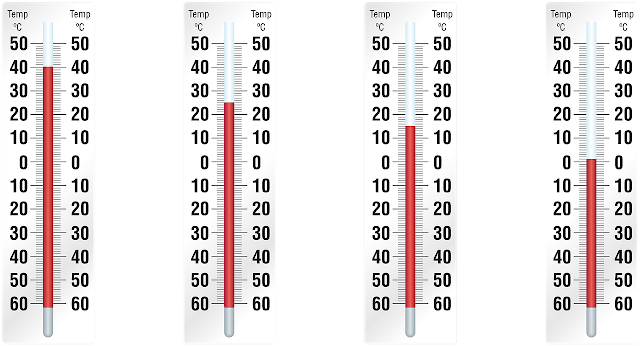People have always been kind of… obsessed with temperature measurement. Even without technologies, Philosophers and scientists have tried to set up a standard model of temperature measurement.
Since we plan to focus on this area in near future, it is reasonable to
star with the basics, and this article will explain just that. We
present to you the basics of temperature measurement.
There are so many methods that have been developed, but most of them are based on the same principle – take a physical property that reacts with temperature and measure it.
The most famous device of this kind is glass thermometer. It is a simple tube filled with mercury or other liquid that reacts to changes in temperature. When the temperature gets higher, the liquid would expand and the temperature is determined by measuring its volume. The theoretical base of this and all other temperature measuring devices is zeroth law of thermodynamics which states that two systems that have the same temperature as the third one also have the same temperature as each other. Please note that this is only simplified explanation of this statement.
Other devices used for the same purpose are thermocouples, pyrometers, thermistors, RTDs, infrared, and the one we’re most interested in – temperature data logger, but we’ll talk about them in future articles.
There are eight types of units used for telling the temperature, those are Kelvin, Celsius, Fahrenheit, Romer, Newton, Delisle, Rankine, and Reaumur. They are all able to tell temperatures ranging from absolute zero to temperature of the Sun.
Important thing to note is that when measuring something, the temperature of the instrument must be the same as the measured material or object in order to get a true result.
Follow ReadyDAQ’s blog to learn more about temperature measurement, especially about temperature data loggers.
There are so many methods that have been developed, but most of them are based on the same principle – take a physical property that reacts with temperature and measure it.
The most famous device of this kind is glass thermometer. It is a simple tube filled with mercury or other liquid that reacts to changes in temperature. When the temperature gets higher, the liquid would expand and the temperature is determined by measuring its volume. The theoretical base of this and all other temperature measuring devices is zeroth law of thermodynamics which states that two systems that have the same temperature as the third one also have the same temperature as each other. Please note that this is only simplified explanation of this statement.
Other devices used for the same purpose are thermocouples, pyrometers, thermistors, RTDs, infrared, and the one we’re most interested in – temperature data logger, but we’ll talk about them in future articles.
There are eight types of units used for telling the temperature, those are Kelvin, Celsius, Fahrenheit, Romer, Newton, Delisle, Rankine, and Reaumur. They are all able to tell temperatures ranging from absolute zero to temperature of the Sun.
Important thing to note is that when measuring something, the temperature of the instrument must be the same as the measured material or object in order to get a true result.
Follow ReadyDAQ’s blog to learn more about temperature measurement, especially about temperature data loggers.

No comments:
Post a Comment